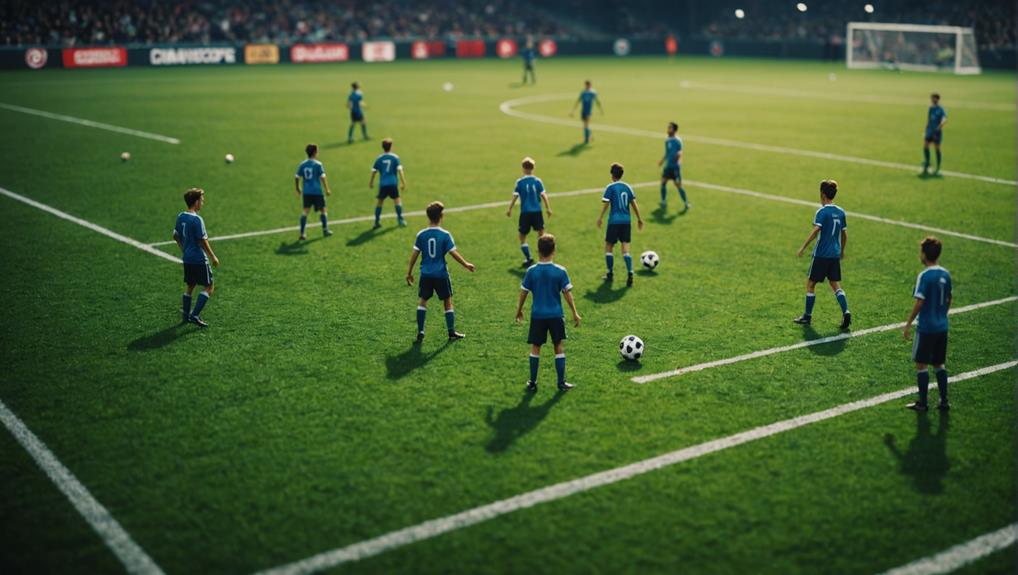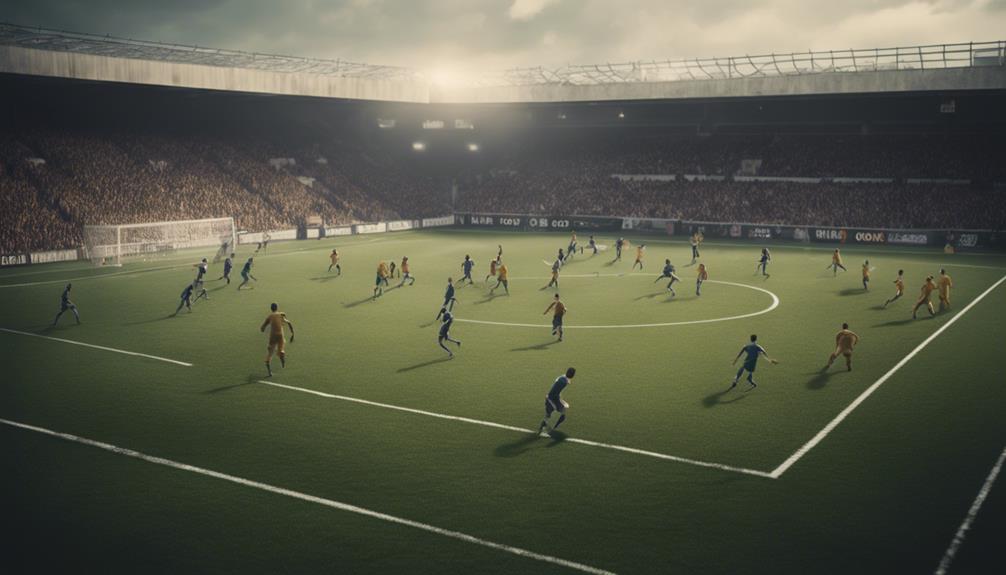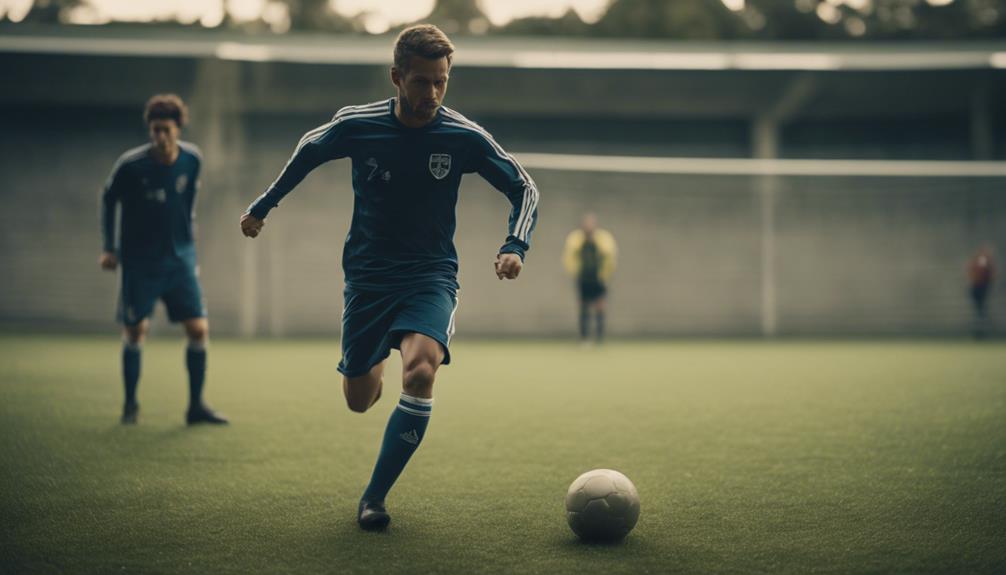
A Detailed Explanation of Soccer Positions
July 3, 2024Step onto the soccer field and explore the diverse world of positions. From the reliable goalkeeper essential for defense, to the nimble attacking midfielder dictating plays, each role brings a unique set of skills and responsibilities. Explore further into the dynamic nature of soccer positions to discover the intricate teamwork and strategy that shape every game.
Goalkeeper Position Overview
Explaining the role of goalkeepers in soccer, they serve as the final line of defense against opposing teams' goal-scoring attempts. Goalkeepers showcase essential skills such as shot-stopping, requiring quick reflexes and agility to deny opponents from scoring. Apart from important duties, goalkeepers play a vital role in the team's build-up play through effective distribution of the ball to initiate attacks.
Within the penalty area, goalkeepers are the only players permitted to use their hands, setting them apart from outfield players. They also wear a distinct jersey color to differentiate themselves on the field. Legendary goalkeepers like Lev Yashin and Peter Schmeichel have become synonymous with excellence in this position, leaving a lasting legacy in soccer history.
Traditionally, goalkeepers are associated with the jersey number 1, a symbolic representation of their unique role in the team. As the ultimate guardians of the goal, goalkeepers embody a blend of athleticism, skill, and tactical awareness essential for their team's success.
Defensive Player Roles and Responsibilities
Defensive players in soccer, including the goalkeeper, full-backs, center-backs, and wing-backs, have the essential task of preventing the opposing team from scoring goals.
The goalkeeper stands as the last line of defense, requiring exceptional reflexes and communication skills to organize the defensive line effectively.
Full-backs provide support to the goalkeeper, utilizing their anticipation and interception abilities to break down opponent attacks.
Center-backs, known for their physical strength and reading of opponents' body language, form the backbone of the defensive line, using their height and heading prowess to clear the ball from dangerous areas.
Wing-backs, while also contributing to the defense, often participate in the team's attacking plays, requiring a balance of defensive solidity and offensive contribution.
Midfielder Position Breakdown

Midfielders serve as the vital link between defense and attack, dictating the tempo and direction of play on the soccer field. Here's a breakdown of the different types of midfielders:
- Defensive Midfielders: These players focus on breaking up opposition attacks, shielding the defense, and initiating quick counter-attacks.
- Wingers: Known for their speed and dribbling skills, wingers operate on the flanks, providing width to the team's play and delivering crosses into the box.
- Attacking Midfielders: Often referred to as playmakers, these individuals wear the prestigious No. 10 jersey. They're the creative minds of the team, responsible for opening up defenses, orchestrating plays, and creating goal-scoring opportunities for their teammates.
Midfielders need a diverse skill set to excel in their roles, from precise passing and ball control to tactical awareness and stamina.
Central midfielders, in particular, act as the engine of the team, supporting both defensive and attacking phases with their distribution and movement.
Forward Player Duties Explained
Forward players play an essential role in a soccer team's offensive strategy by focusing on scoring goals and creating scoring opportunities. Positioned in the attacking third of the field, forward players are pivotal in breaking through the opposition's defense.
They come in various forms such as the target man, false nine, or poacher, each with a unique approach to goal-scoring. To excel in this position, forwards must showcase skills like speed, agility, and precise positioning. Making decisive runs to outsmart defenders and displaying clinical finishing are key attributes of a successful forward player.
Whether acting as the focal point of the attack as a target man, dropping deep as a false nine to create space, or lurking in the box as a poacher ready to pounce on chances, forwards play a significant role in executing the team's offensive game plan effectively in the game of soccer.
Key Characteristics of Attacking Midfielders

Creativity, precision, and vision are essential traits that define the role of attacking midfielders in soccer. Attacking midfielders play a pivotal role in creating goal-scoring opportunities for their team through their unique skill set.
Here are a few key characteristics that set attacking midfielders apart:
- Playmaker: Attacking midfielders are often considered the architects of the team, responsible for setting the tempo of the game and creating chances for their teammates.
- Creative Vision: Their ability to see and execute precise passes that penetrate defenses is unmatched, leading to increased offensive opportunities for their team.
- Dribbling and Orchestrating Plays: Attacking midfielders excel in dribbling past opponents and orchestrating intricate offensive plays that keep the opposition on their toes.
Players like Kevin De Bruyne exemplify these skills, showcasing the impact a world-class attacking midfielder can have on a game.
Conclusion
So, now you have a better understanding of the various soccer positions and their roles on the field.
Whether you're a goalkeeper, defender, midfielder, or forward, each position plays an essential part in the team's success.
Next time you watch a game, pay attention to how each player contributes to the overall strategy.
Can you identify which position is the most vital for your favorite team's style of play?


